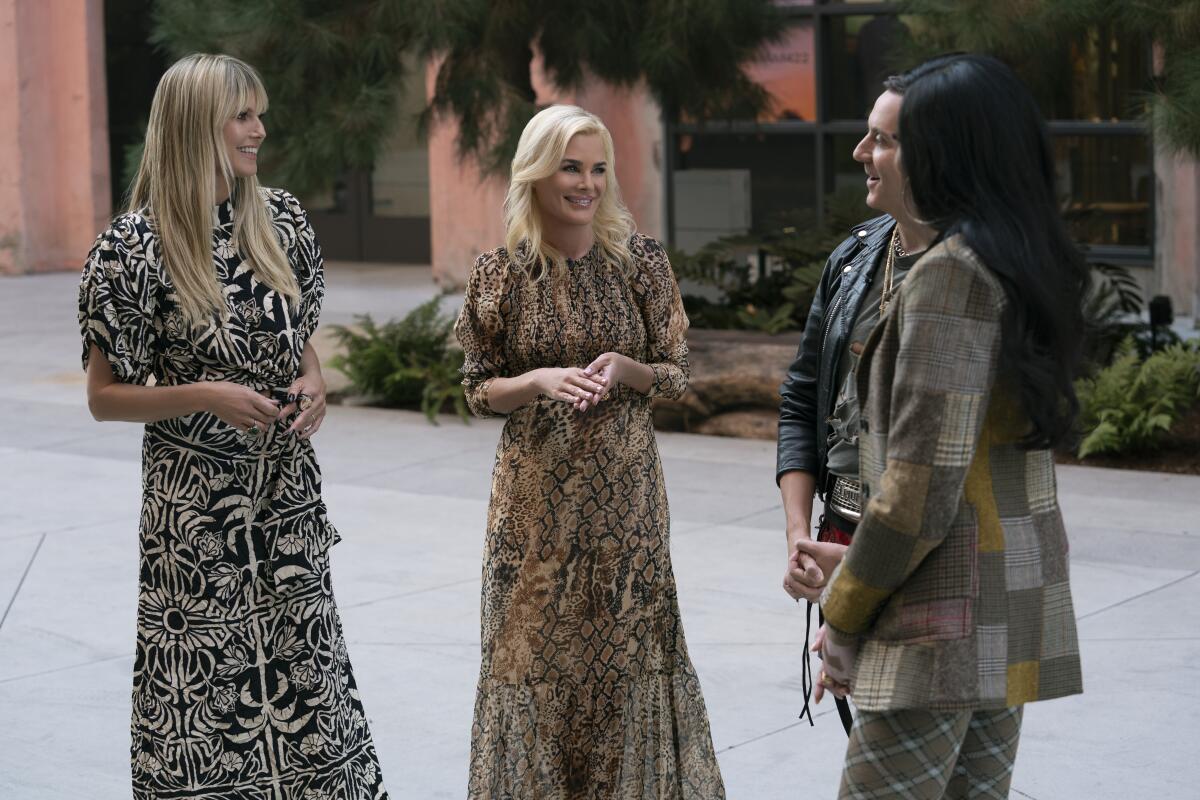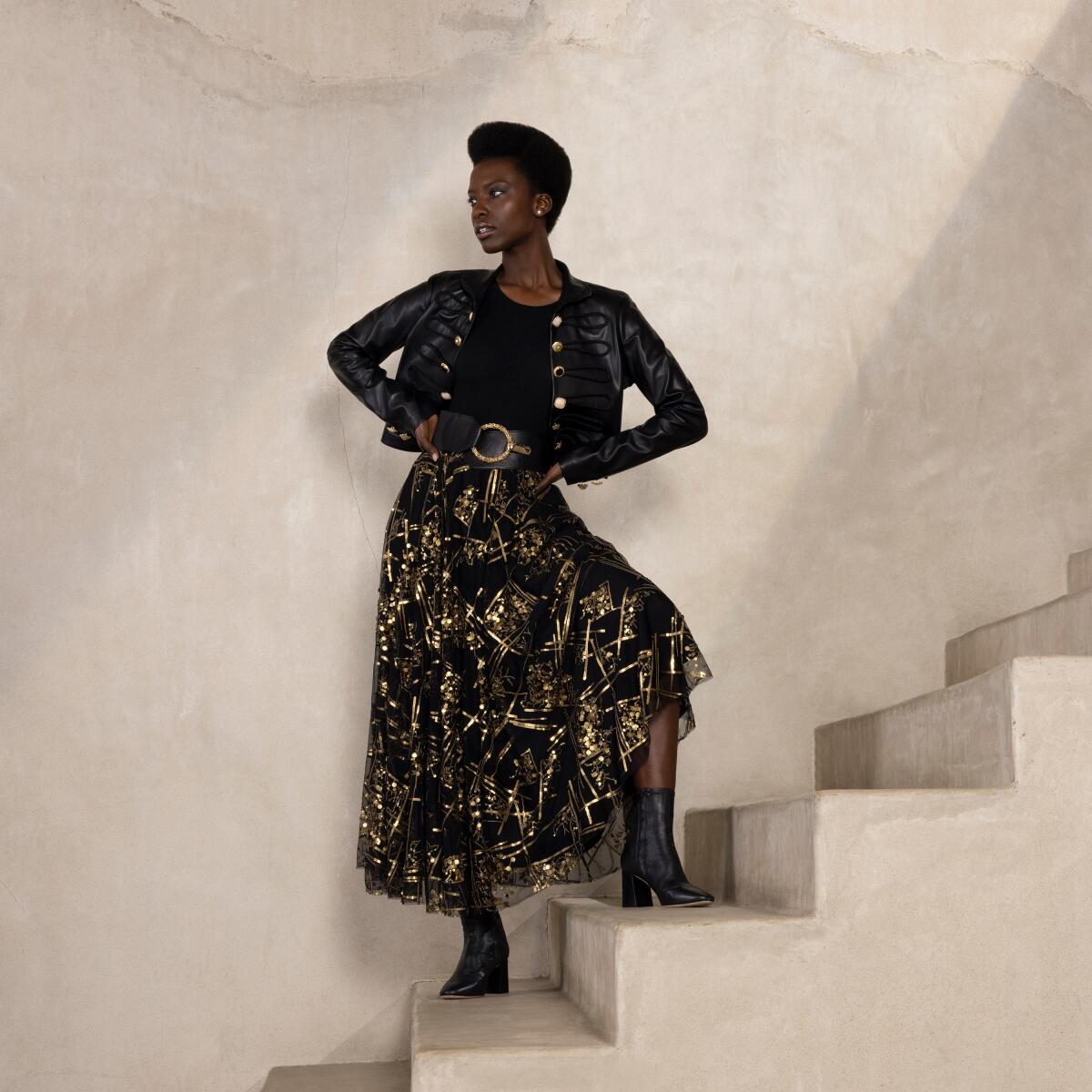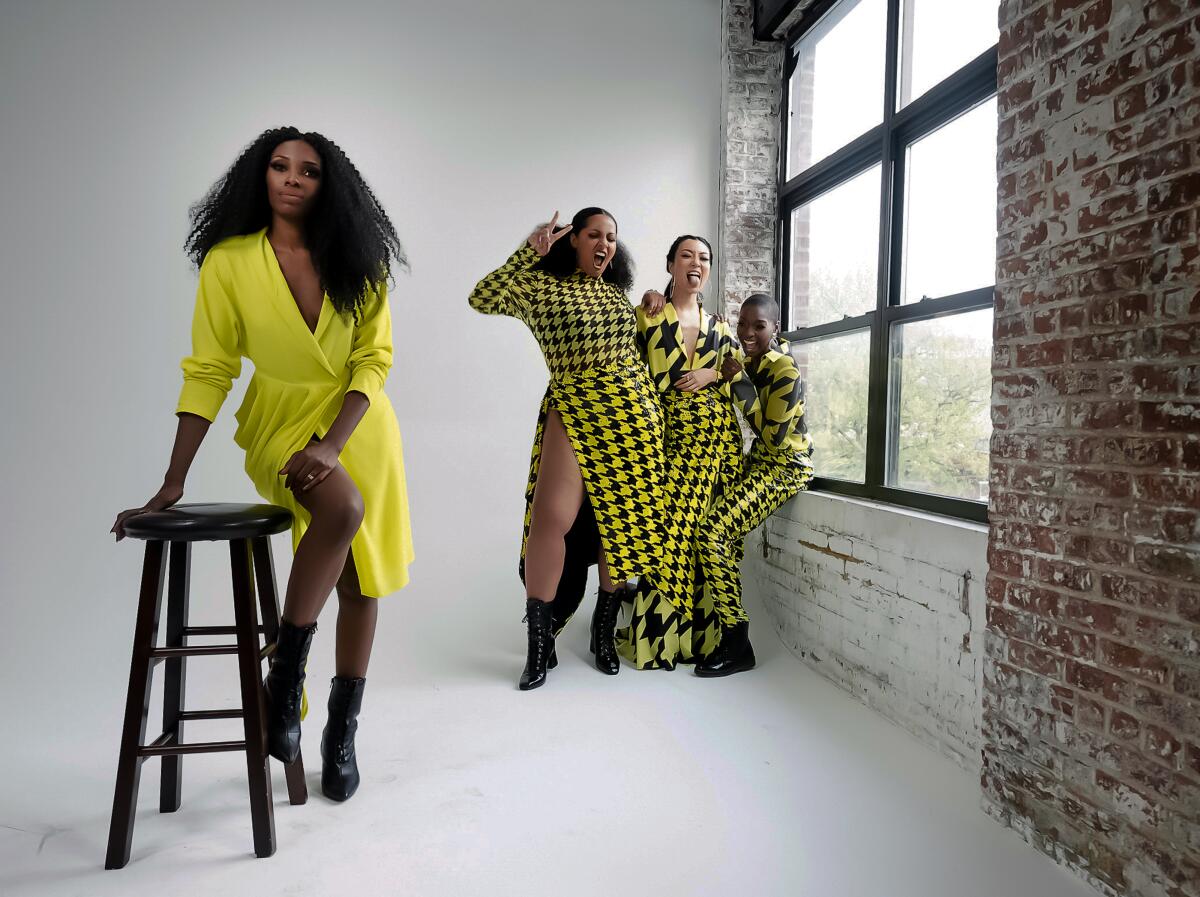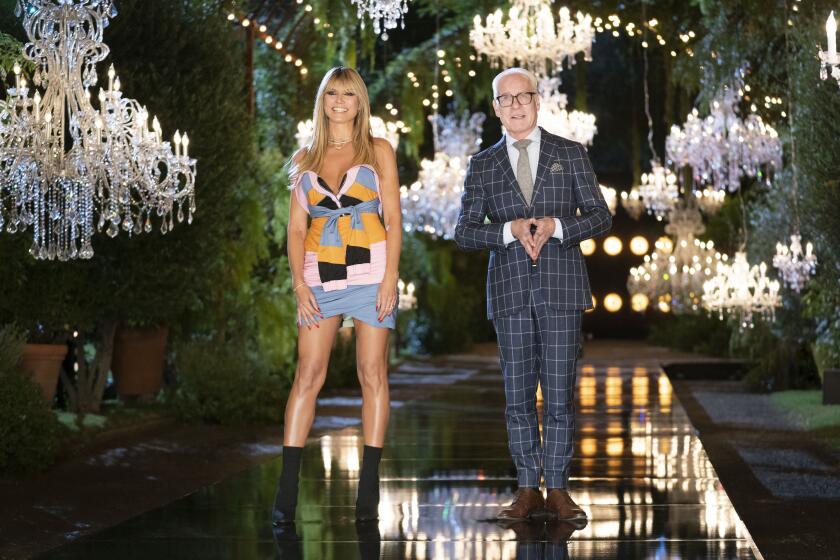Our fashion critic reviews ‘Making the Cut’s’ winning looks: ‘A roller-coaster ride’

The following story contains spoilers from the seventh and eighth episodes of Amazon’s “Making the Cut” Season 2. Read our review of last week’s looks here.
Episode 7: The Goldilocks of concept stores
The penultimate episode of the season finds the three remaining contestants — Andrea Pitter, Gary Graham and Andrea Salazar — given three days to envision and create bricks-and-mortar concept shops that showcase their respective brands’ identities (with the help of the show’s set designers). They also are charged with creating three looks to display in the store alongside any pieces created for previous episodes.
Episode 7 is one of the few that takes the contestants out of the Malibu fashion bubble, for two good reasons. First, the concept stores were brought to life at the Row DTLA shopping complex, where Season 1 winner Jonny Cota (who makes a pep-talk cameo early in the episode) has his boutique. Second, as Klum explains to the remaining troika, the ultimate winner of the season would be getting not only the $1 million top prize and an Amazon Fashion mentorship but also a three-year, no-cost lease for a shop there.
Three-challenge winner Graham opted for a space inspired by a Shaker round barn, complete with a round wooden interior silo as the focal centerpiece, old-timey photographs on the walls and a dense explanatory text block at the entrance. Among the clothes he created for the challenge were a plain black dress that cohost Tim Gunn advised was a bit too plain (Graham responded by adding hand-painted details) and jersey leggings featuring some of the prints familiar from earlier episodes.
Fresh off her first challenge win, Pitter went with a space designed to look like a New York City subway car, complete with seats, metal poles and the name of her label spelled out in subway tiles. For her new looks, she opted to add some color — specifically a sunny shade of yellow — that appeared in a range of silhouettes including dresses and flare-legged trousers.

Salazar, who entered the final two episodes without having won a single challenge, seemed to know she was in a win-or-go-home situation and pulled out all the stops for a museum-themed concept shop that presented her Seta label as a fashion exhibition displayed against gray walls and on mannequins.
Instead of watching the clothes come down the runway as in previous episodes, the judges — joined by Amazon Fashion President Christine Beauchamp — toured the concept shops before making their decision. (While that made for a refreshing departure from the show’s usual format, it offered just the barest glimpse at the newly designed clothes.) The judges found Graham’s shop to be too heavy on the nostalgic backstory and not quite modern-feeling enough for their liking. And, while they liked Pitter’s chic train-car concept, they felt it came across more like a window display than a sales floor.
That left Salazar as the Goldilocks of the episode with a concept store that was just right, managing to telegraph her brand’s identity not just through the clothes on display but also the lighting and even the smell of the space thanks to a custom scent spritzed in the air. Another big factor in handing Salazar the win was a social-media-ready, full-length mirror propped against one wall with the hashtags #youareLEGEND and #SETAMUSEUM emblazoned at the top.
With Salazar winning the concept-store challenge, that meant one of the other two would be sent packing, right? Wrong. The judges decided that neither Pitter nor Graham deserved to be booted from the bubble: All three designers would face off in the season finale.
The takeaway: The pieces from Salazar’s concept-store challenge dropping at the MTC store include a black faux leather jacket with military-inspired details ($92.90) and a black, layered tulle midi skirt ($119.90) with metallic gold sequins. Both are toned-down (read: more commercial) riffs on silhouettes she’s sent down the runway several times this season.
Fashion critic Adam Tschorn has reviewed every winning look from the first two seasons of ‘Making the Cut.’ Check out his most, and least, favorite.
Episode 8: A roller-coaster ride
The challenge of the final episode: The remaining designers were given four days to create 10-look collections and prepare a formal business pitch to deliver to Amazon Fashion’s Beauchamp on the day before presenting their final runway shows. All three used their finale collections to showcase their ability to grow as creatives, and their face time with Beauchamp to sketch out their ability to grow as businesses. And, as with the previous episode, this one didn’t focus an awful lot on the clothes themselves.
Salazar, whose pitch Beauchamp deemed the most businesslike of the bunch, dubbed her final runway collection “The Phenomenon,” taking inspiration from natural phenomena around the world as well as her family. While the judges noted her increased use of lighter colors (many of her earlier-in-the-season pieces were on the dark-and-sparkly spectrum) it wasn’t enough to give her the win.
Graham, who seemed to take every past judge’s note to heart, did so again here by attempting to add both a sense of modernity and a dash of sexy to his finale collection, which he said was inspired by gunslingers, the Wild West and Alison Arngrim’s “Little House on the Prairie” character, Nellie Oleson. Several pieces caught the judges’ attention, including a diaphanous dress that judge Jeremy Scott compared to those in Degas’ ballet dancer paintings. And though Scott emerged as one of Graham’s most vocal supporters in the waning moments of the episode, it wasn’t enough to get the designer from Franklin, N.Y., the votes he needed to take the top prize.
The collection that brought the heat — and enough votes for the win — belonged to Brooklyn-based bridalwear designer Pitter. “I kind of wanted you all to go on a roller-coaster ride [like] I’ve been on,” she told the judges in advance of her show. “This is going to be a party.”

And a party it was, with so much color, pattern and sparkle coming across the catwalk that there was something fun for just about everyone — from the sequined maroon-robe-over-lingerie opening look to the sleeveless sparkly blue animal-print closing ensemble and the bouquet of busy floral prints on track jackets, wide-legged trousers, robes and and dresses in between.
Pitter’s business pitch also factored into the win, with Beauchamp telling the judges that the designer’s strong point of view and her desire to create clothes for women of every body shape and skin tone were a powerful part of her presentation.
“I came into this competition to break out of this bridal box — bridal-wise, personality-wise,” Pitter said at the end of the episode. “I have learned that I am most certainly not stuck in a box.”
Where she will be — at least for the duration of a three-year, no-cost lease — is in a space at the Row DTLA. Thanks to that late-in-the-game prize, along with the $1 million top prize, a mentorship and a chance to create a co-branded collection with Amazon Fashion, we’re likely to see a lot more of Pitter’s work product.
And perhaps Salazar and Graham’s too. In one last twist in a sophomore “Making the Cut” season filled with them, Klum informed the two also-rans that Amazon Fashion’s Beauchamp was so impressed with their brands’ visions that both would have the chance to sell their finale collections through the “MTC” online store too.
The takeaway: Even though Pitter ended up winning the show’s second season — and soon will be opening a store at the Row DTLA and designing a new cobranded collection with Amazon Fashion — the decision to make Graham’s and Salazar’s finale collections available for purchase (prices vary but are around $100) alongside hers makes it a win for them as well. And, perhaps more important, it’s also a win for fans who stuck around for the whole 10-designer, eight-episode roller-coaster ride.
More to Read
The complete guide to home viewing
Get Screen Gab for everything about the TV shows and streaming movies everyone’s talking about.
You may occasionally receive promotional content from the Los Angeles Times.








